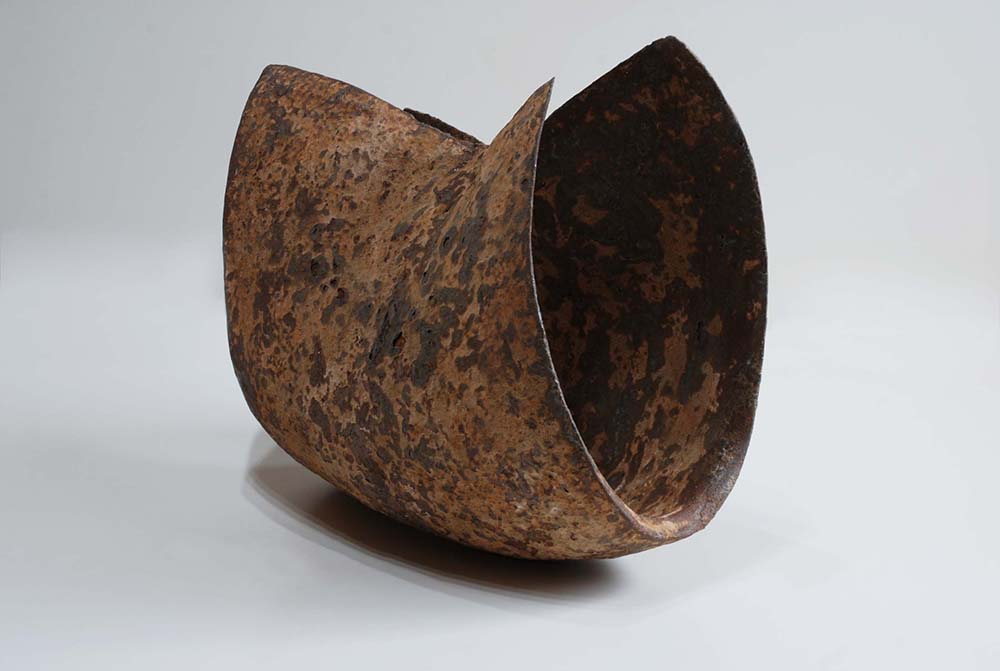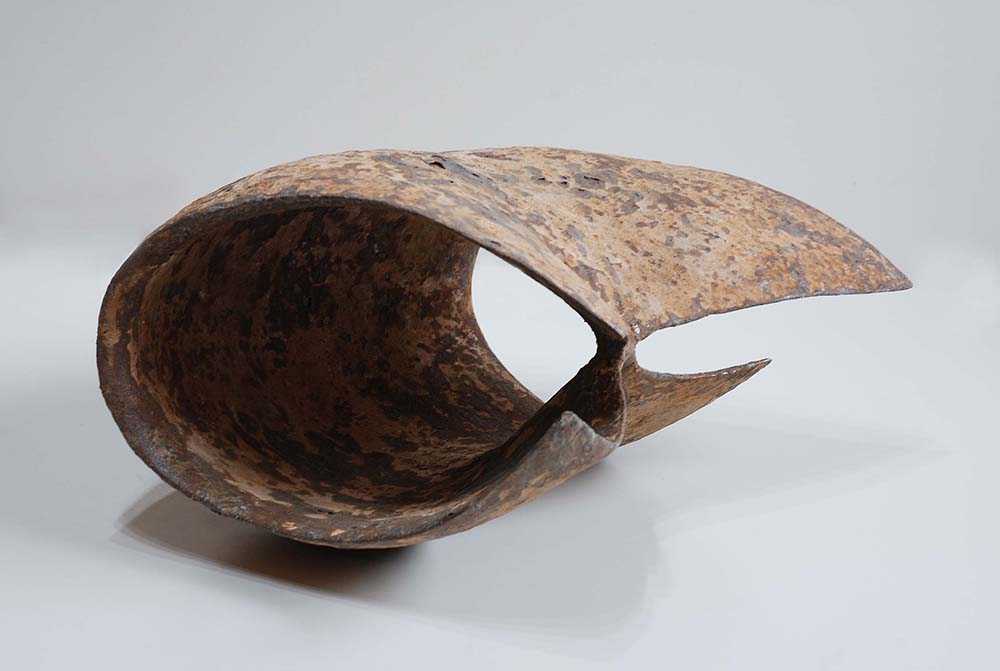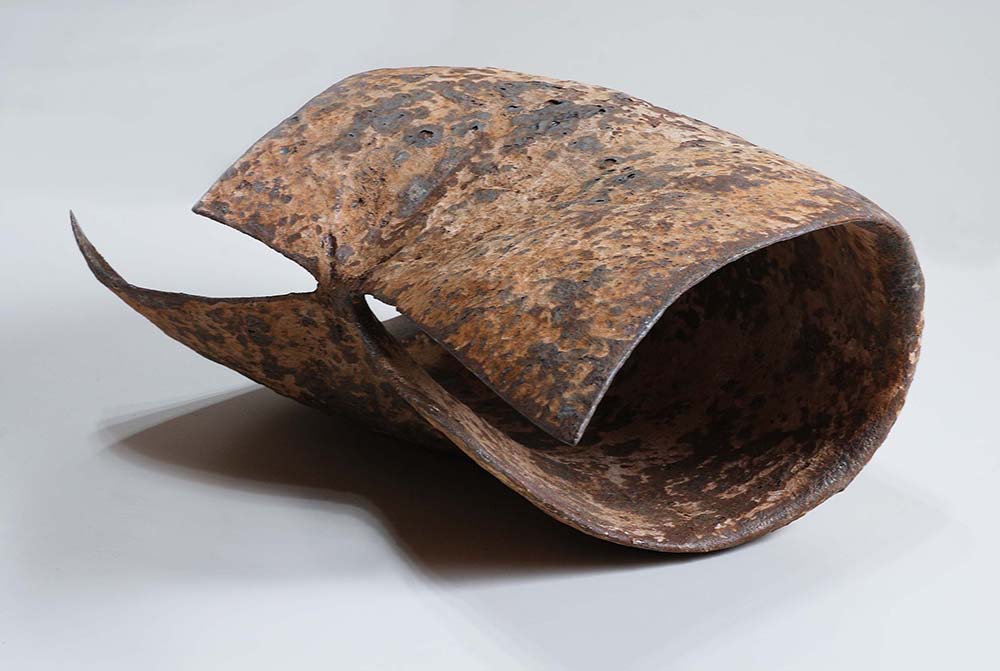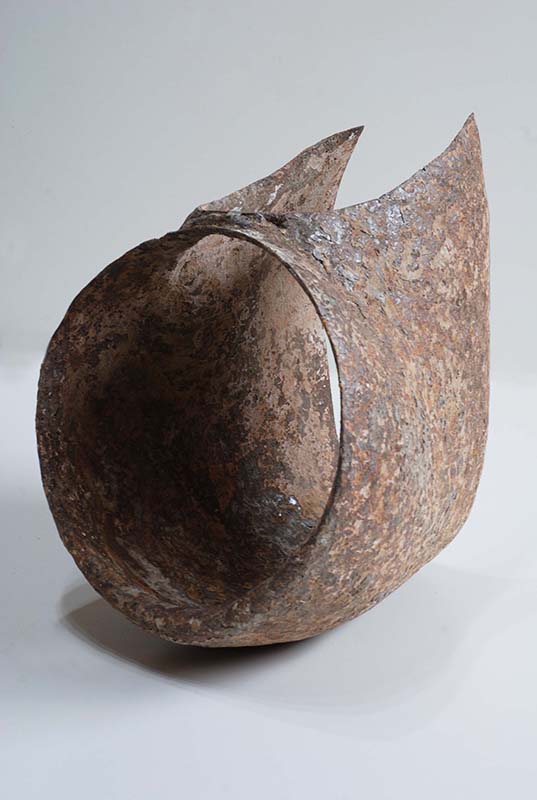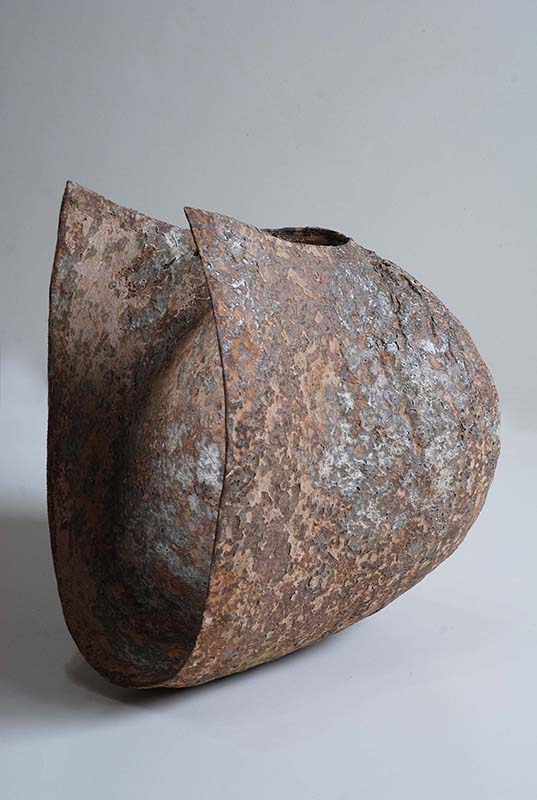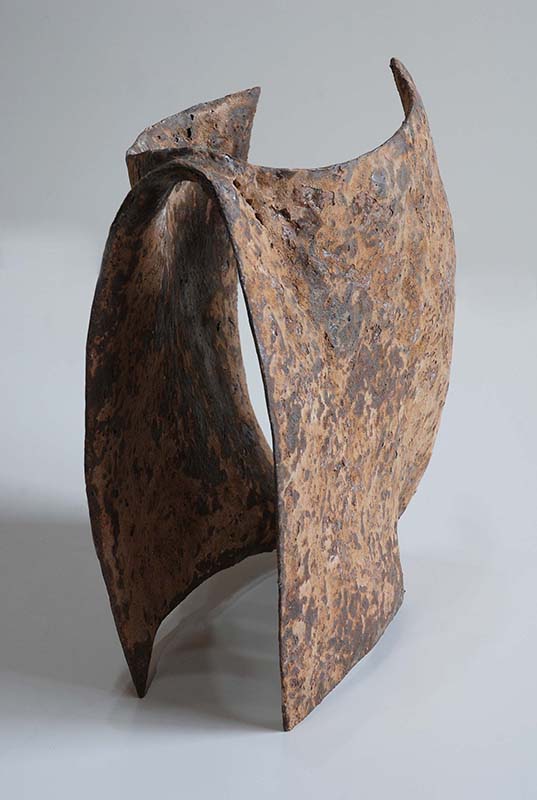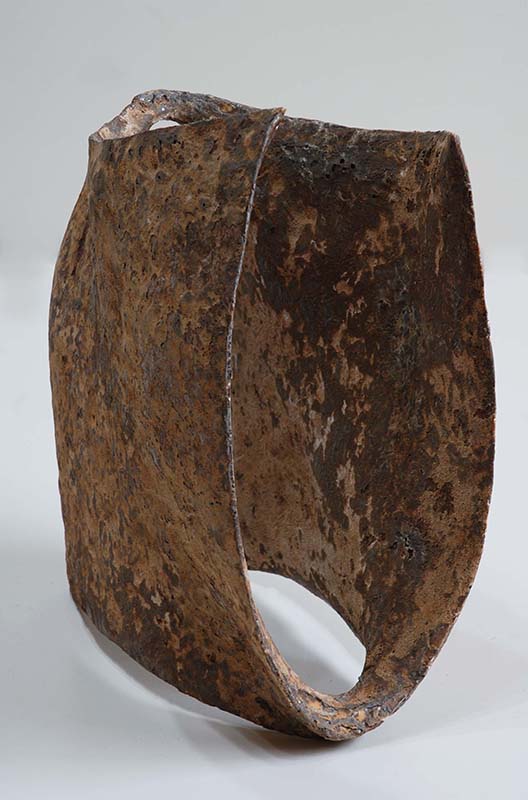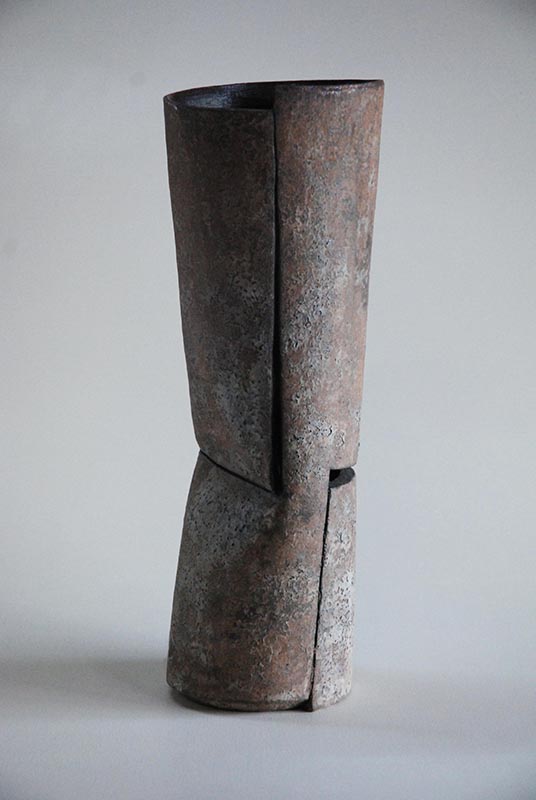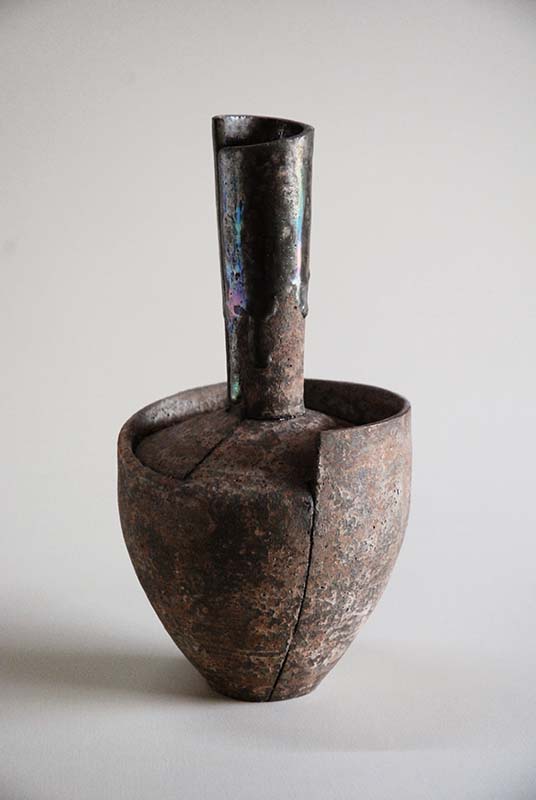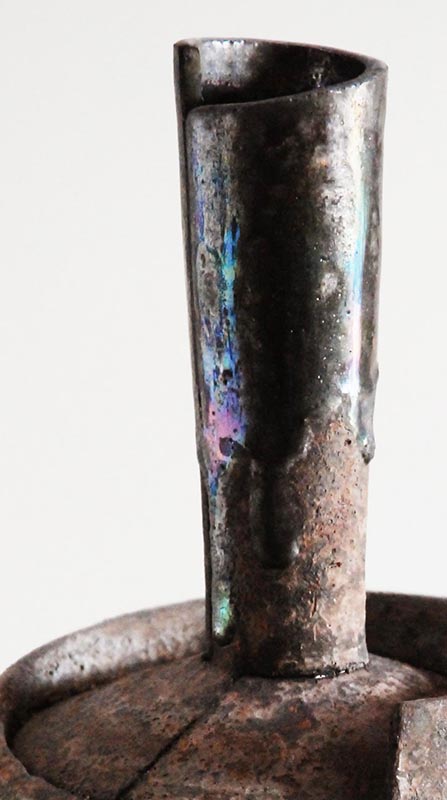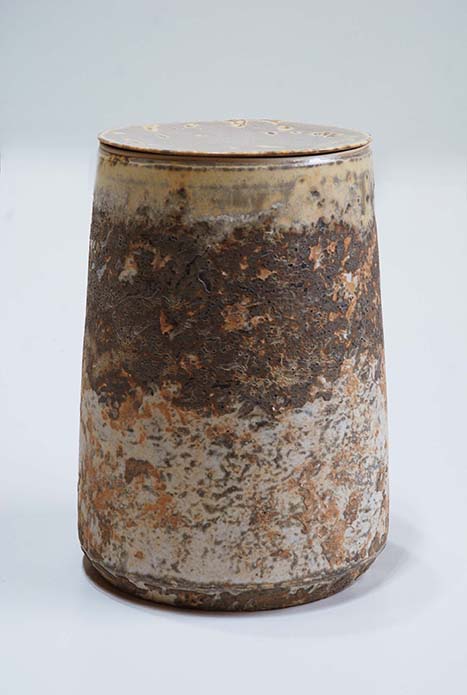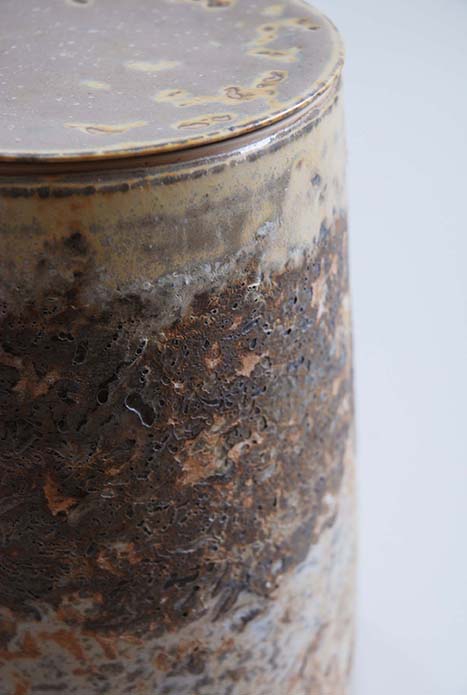The Aesthetics of Erosion
Introduction by Keiko Fukai
YOSHIMURA Toshiharu’s Erosion Series resemble aged, rusty metal or worn wooden vessels, or old tools. YOSHIMURA says, “All things made by humans are destined to deteriorate over time. New things are pretty, but those things become even more special over time, and a different type of beauty emerges.”
In order to express this erosion caused by the passage of time, through trial and error Yoshimura developed techniques to sandwich the soluble material (glaze) with two different insoluble materials (clay and alumina).
Through the process of dissolution, erosion and concretion during the firing the result is a dramatic effect of erosion on the surface.
Yoshimura lives in the center of Kyoto with his wife FUKUMOTO Fuku and two daughters, and works in the rural area in the northern part of Kyoto called Keihoku.
When I was studying ceramics in college my teacher asked me, “What is firing for you?”
At the time I believed that, in addition to ideas, forms and colors were the most important aspects of ceramics; firing was nothing more than a process to harden the ceramics. However, I was growing more interested in clay as a material and curious about what else was taking place during firing beyond the physical change.
During the past ten years—through many different processes of trial and error– my signature Erosion Series has now begun to express my goals. Among many failed experiences in the beginning there occurred an unforgettable episode when I fired a bowl using natural ash glaze. The surface of the bowl was covered by spots where the glaze had melted and fused onto the clay and other spots where the glaze had not melted which were only bare clay. This was because the temperature in the electric kiln (combination with gas) was not high enough.
At first I thought the bowl was a failure as a work of art, but I also realized the piece had captured the phenomenon that occurred in the kiln when the soluble and insoluble materials combined. This was exciting and inspired me! But I needed to learn how to achieve this same effect intentionally, and not just accidentally.
Through trial and error I developed a technique of ‘sandwiching’ the soluble glaze between the two insoluble materials of clay and powdered alumina. During the firing these materials undergo dissolution, erosion and concretion, and the difference in the use of the natural ash glaze instead of a prepared glaze revealed dramatically the effects of the surface erosion created by the ash glaze.
I have realized that the intensity of the heat during the firing is what produces the ‘eroded’ surfaces of my current work. So, here twenty years later, I have the answer to my teacher’s question!

